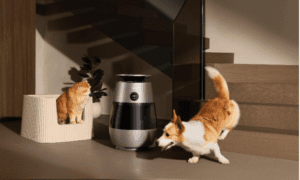Introduction to Dell OptiPlex Drivers
Welcome to the world of Dell OptiPlex drivers, where performance meets precision! If you’re a tech enthusiast or a business professional seeking optimal functionality from your Dell OptiPlex desktop, then driver updates are an essential part of your journey. These powerful machines require regular maintenance to ensure they operate at peak performance levels and deliver the best results for all your computing needs.
In this blog post, we’ll dive into the importance of keeping your Dell OptiPlex drivers up-to-date and explore how these updates can enhance overall system performance. We’ll also guide you through the process of checking for and installing driver updates seamlessly. And fear not, as we’ll address common issues that may arise during this process and provide troubleshooting tips to solve them effectively.
So grab your keyboard and get ready to master the art of Dell OptiPlex driver updates – because when it comes to achieving maximum productivity with your trusty machine, staying ahead is half the battle! Let’s unlock new levels of performance together!
Why Regular Updates Are Essential for Peak Performance
Regular updates are essential for peak performance of your Dell OptiPlex drivers. These updates, provided by Dell, are designed to improve the functionality and compatibility of your system. By keeping your drivers up to date, you ensure that your computer operates at its best.
One key reason why regular updates are important is security. Outdated drivers can leave your system vulnerable to cyber threats as they may lack necessary security patches. By updating your drivers regularly, you stay protected against potential risks and keep your data safe.
Another benefit of regular driver updates is improved stability and performance. Updates often include bug fixes and optimizations that enhance the overall functionality of the hardware components in your OptiPlex system. This can result in faster processing speeds, smoother multitasking, and better overall performance.
In addition to security and performance enhancements, driver updates also bring new features and capabilities to your OptiPlex device. These improvements may introduce additional functionalities or enhanced compatibility with other software programs or peripherals.To ensure you don’t miss out on these benefits, it’s crucial to check for driver updates regularly through Dell’s official support website or by using automated tools like Dell Update Utility. Once you identify any available updates for specific components such as graphics cards, network adapters, or audio devices, make sure to install them promptly.
By staying proactive with driver updates for your Dell OptiPlex system, you optimize its performance while ensuring a secure computing environment. Take advantage of the latest advancements offered by Dell through regular driver update installations!
How to Check for and Install Dell OptiPlex Driver Updates
Keeping your Dell OptiPlex drivers up-to-date is crucial for maintaining peak performance. Fortunately, checking for and installing driver updates is a straightforward process. Here’s how you can do it:
1. Identify the model of your Dell OptiPlex: Start by finding out the specific model of your computer, as different models may require different driver updates.
2. Visit the Dell Support website: Head over to the official Dell Support website and navigate to the Drivers & Downloads section.
3. Enter your service tag or select your product manually: Use either your service tag number or choose your product from a list of options provided on the website.
4. Select the operating system: Choose the correct operating system that you are currently using on your Dell OptiPlex.5. Locate and download relevant drivers: Browse through the available driver updates listed on the website and download those that match your hardware components.
6. Install downloaded drivers: Once downloaded, run each driver file individually and follow any installation prompts given by Windows or Dell’s setup wizard.
By regularly checking for and installing these important updates, you can ensure that your Dell OptiPlex performs at its best capabilities while enjoying enhanced security features and overall stability.
Common Issues with Driver Updates and How to Troubleshoot Them
Updating drivers is crucial for maintaining the optimal performance of your Dell OptiPlex computer. However, sometimes driver updates can come with their fair share of challenges. Let’s explore some common issues that users may encounter during the update process and how to troubleshoot them.
One common issue is compatibility problems with the new driver. Sometimes, a driver update might not be compatible with your specific hardware or operating system version. To resolve this, you can try checking for any available alternative drivers on the Dell website or reaching out to Dell support for guidance.
Another issue users may face is a failed installation or an error message during the update process. This can happen due to various reasons such as incomplete downloads, corrupted files, or conflicting software. If you encounter this problem, try restarting your computer and running the installation again. You can also check if there are any pending Windows updates that need to be installed before updating your drivers.
Sometimes after updating a driver, you may notice that certain features or peripherals are not working correctly anymore. This could indicate an incompatible driver version or a misconfiguration during installation. In such cases, it’s recommended to roll back the driver to its previous version using Device Manager in Windows.
Another troubleshooting step is uninstalling and reinstalling the problematic driver completely from your system before attempting another update.
In rare cases, even after following these troubleshooting steps, you may still experience issues with updated drivers. It’s essential at this point to seek assistance from Dell support who can provide further guidance based on your specific situation.
Remember that patience and persistence are key when dealing with driver-related issues as they often require trial-and-error approaches until finding the right solution for your particular setup.
Conclusion
Keeping your Dell OptiPlex drivers up to date is crucial for maintaining peak performance and ensuring that your system runs smoothly. Regularly updating your drivers not only improves compatibility with the latest software and hardware but also helps fix any bugs or issues that may be present.
To check for and install Dell OptiPlex driver updates, you can use the Dell Support website or rely on automated tools like Dell Command Update. These methods make it easy to keep track of new driver releases and ensure that you have the most current versions installed.
While updating drivers is generally a straightforward process, it’s not uncommon to encounter some common issues along the way. If you experience problems after installing a driver update, such as compatibility issues or device malfunctions, don’t panic. There are troubleshooting steps you can take, including rolling back the driver to a previous version or reinstalling it from scratch.
Remember, when dealing with driver updates, patience is key. It’s important to follow instructions carefully and double-check compatibility before proceeding with an installation. If you’re unsure about anything or need assistance, don’t hesitate to reach out to customer support for guidance.
By mastering Dell OptiPlex driver updates and staying proactive in keeping them up to date, you’ll ensure optimal performance and longevity for your system. So take a few minutes every month to check for new updates – your computer will thank you!
And there we have it! You now know why regular updates are essential for peak performance in your Dell OptiPlex system, how to check for and install these updates correctly using various methods available, as well as how to troubleshoot common issues that may arise during this process.





























